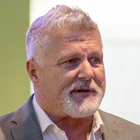You are here
Intermittent Hypoxia and Spinal Motor Plasticity: Breathing and Walking after Spinal Cord Injury
EVENT:
Weekly Seminar | Not Open to the PublicWho Should Attend:
ResearchersEvent Flyer:
Speakers
Abstract
After decades of fundamental research investigating mechanisms giving rise to spinal motor plasticity following exposure to (low dose) acute intermittent hypoxia, we harnessed this plasticity to improve breathing and limb function in people with chronic incomplete spinal cord injury (as well as ALS). In this talk, I will review fundamental research guiding translation of this novel neurotherapeutic strategy, and then feature more recent efforts to optimize plasticity and functional gains by recognizing and controlling factors that constrain plasticity and therapeutic efficacy.

Publications
J Appl Physiol (1985). 2015 Dec 15;119(12):1455-65. doi: 10.1152/japplphysiol.00235.2015. Epub 2015 May 21.
J Neuroinflammation. 2021 Jan 19;18(1):28. doi: 10.1186/s12974-021-02074-6.
Exp Neurol. 2021 Apr 26;113726. doi: 10.1016/j.expneurol.2021.113726. Online ahead of print.

